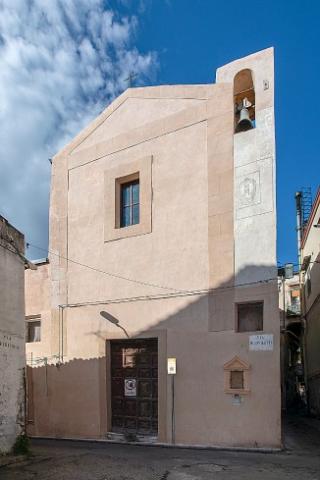On a crossroads of roads leading to various points of the town, stands the Church of Maria SS. Odigitria. Now closed to worship, its name recalls its Greek origin. Built in 1596, the façade features a small votive niche—added later than the rest of the building—beneath which words of an indulgence are inscribed in marble. In the centre, a wooden doorway opens to reveal an interior that once housed a significant artistic and decorative ensemble, including frescoes attributed to Pietro Novelli and stuccoes by Giacomo Serpotta.
The church is located in the Carminedistrict, a country area outside the walls that in the 16th century became a huge garden where the dignitaries of the Archbishop's Court lived. It was the Garden of the Court, a place pleasing to the eye and to the soul where Antonio Veneziano, the greatest Sicilian poet, is said to have strolled for a long time. in search of inspiration for his poetry in Sicilian dialect and poems in Latin. Small landowners, farm labourers and modest cattle breeders lived there.
A few steps away, on Via Odigitria, the scent of a wood-burning oven fuelled by olive branches recalls one of the oldest traditions linked to the territory and history of the town: the unmistakable Monreale bread. It has been made the same way for centuries and makes bread with a unique flavour: a crispy, brown outer crust at least three millimetres thick, sprinkled with sesame seeds, with a deep yellow crumb. Whether it's a round loaf or a pizziata, a long loaf or a stepped one, or a 'pupiddu', a stop is a must on this slow walk that tastes of times gone by.
Credits: Arch. Paola La Scala
